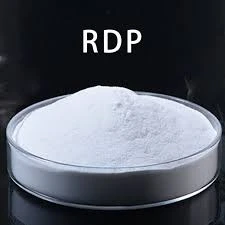
Nov . 10, 2024 14:26 Back to list
Synthesis Techniques and Methods for HPMC Production and Applications in Industry
HPMC Synthesis Advancements and Applications in Pharmaceutical Science
Hydroxypropyl methylcellulose (HPMC) is a widely used polymer in the pharmaceutical industry, notable for its diverse applications ranging from drug formulation to food products and cosmetics. The synthesis of HPMC is a pivotal process that not only influences its properties but also its functionality in various applications. This article delves into the synthesis of HPMC, exploring its chemistry, methods, and pertinent implications in the pharmaceutical sector.
Understanding HPMC
HPMC is a semi-synthetic derivative of cellulose, which is obtained from natural sources. The modification of cellulose through hydroxypropyl and methyl substitution leads to a compound with unique attributes. Its chemical structure enables HPMC to exhibit excellent film-forming capabilities, high viscosity, and stable gel formation. These properties make it ideal for drug delivery systems, acting as a binding agent, thickness enhancer, and stabilizer.
Synthesis of HPMC
The synthesis of HPMC involves several critical steps, primarily the derivatization of cellulose. This process begins with cellulose, which can be obtained from various plant materials, including wood and cotton. The cellulose is first treated with alkali to dissolve and activate its fibers, allowing for further chemical modification.
1. Alkylation The primary step in HPMC synthesis is the alkylation of cellulose. In this stage, cellulose is reacted with propylene oxide and methyl chloride under controlled conditions. The reaction is typically conducted in an aqueous or organic solvent, and alkalizing agents such as sodium hydroxide are often employed to facilitate the process.
2. Hydrolysis Once cellulose has been alkylated, the product undergoes mild hydrolysis to achieve the desired degree of substitution. This step is crucial because it affects the solubility and viscosity of the final product. The degree of hydroxypropyl and methyl substitutions can be finely tuned to meet specific application requirements, ranging from pharmaceutical formulations to construction materials.
3. Purification and Drying After alkylation and hydrolysis, the crude HPMC is purified to remove unreacted reagents and by-products. This is typically achieved through precipitation or filtration methods. Once purified, HPMC is dried to obtain a powder form, which can be handled, stored, and used in various formulations.
hpmc synthesis

Applications in Pharmaceutical Science
The synthesis of HPMC has revolutionized pharmaceutical formulations in several ways
- Controlled Release HPMC is extensively used in the design of controlled-release drug formulations. Its ability to form gel-like matrices when in contact with water allows for the gradual release of active pharmaceutical ingredients (APIs), enhancing patient compliance and therapeutic efficacy.
- Tablet Coating HPMC serves as a film-forming agent in tablet coating applications. It provides a protective barrier around the tablet, ensuring stability while also improving the aesthetic appeal by providing a smooth finish.
- Suspension and Emulsions Due to its thickening properties, HPMC is employed in suspensions and emulsions, enhancing the stability of these formulations. It helps maintain the uniform distribution of active ingredients, crucial for achieving consistent dosing.
Future Directions
As the pharmaceutical industry continues to evolve, the synthesis and applications of HPMC will likely witness further advancements. Innovative methods, such as green synthesis techniques, are being explored to produce HPMC with reduced environmental impact. Additionally, researchers are investigating the use of HPMC in novel drug delivery systems, including nanocarriers and 3D printed medications, to meet the growing demand for personalized medicine.
In conclusion, HPMC synthesis is a fundamental process that underscores the importance of this versatile polymer in pharmaceutical science. Its unique properties and wide-ranging applications ensure that HPMC remains a key ingredient for the development of effective drug delivery systems and formulations, promising continued innovation in the healthcare sector.
-
Versatile Hpmc Uses in Different Industries
NewsJun.19,2025
-
Redispersible Powder's Role in Enhancing Durability of Construction Products
NewsJun.19,2025
-
Hydroxyethyl Cellulose Applications Driving Green Industrial Processes
NewsJun.19,2025
-
Exploring Different Redispersible Polymer Powder
NewsJun.19,2025
-
Choosing the Right Mortar Bonding Agent
NewsJun.19,2025
-
Applications and Significance of China Hpmc in Modern Industries
NewsJun.19,2025







